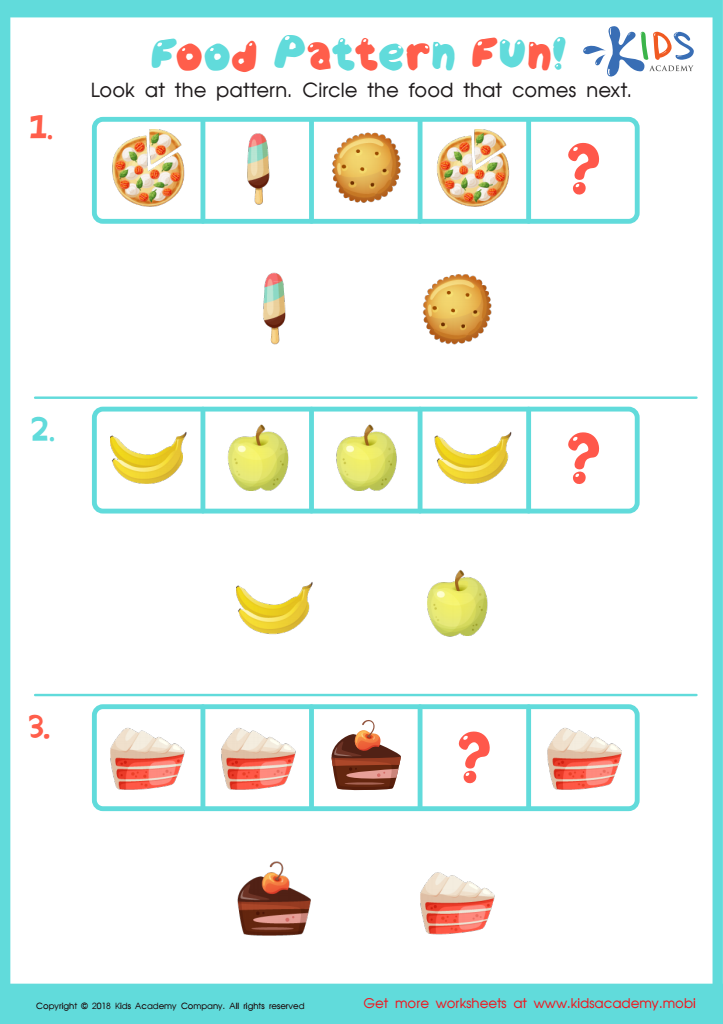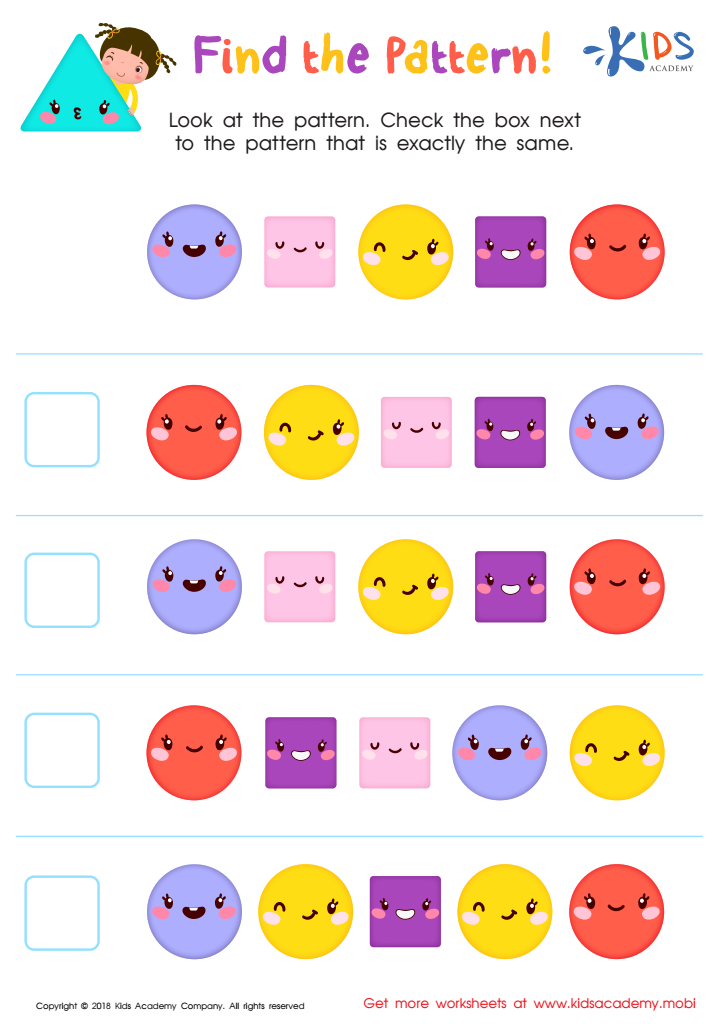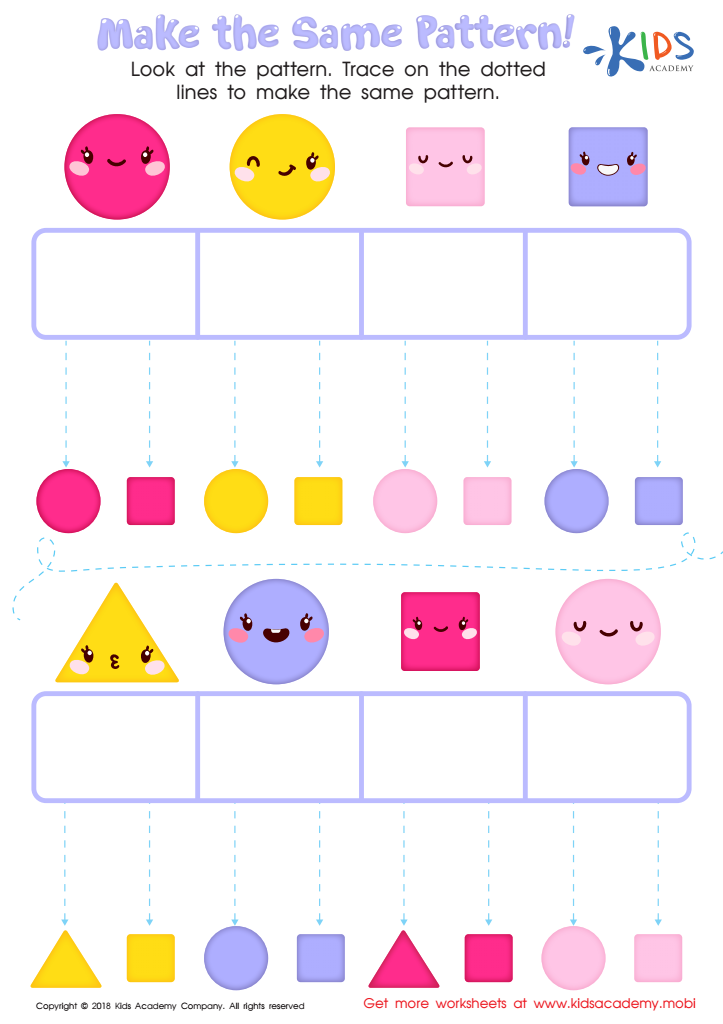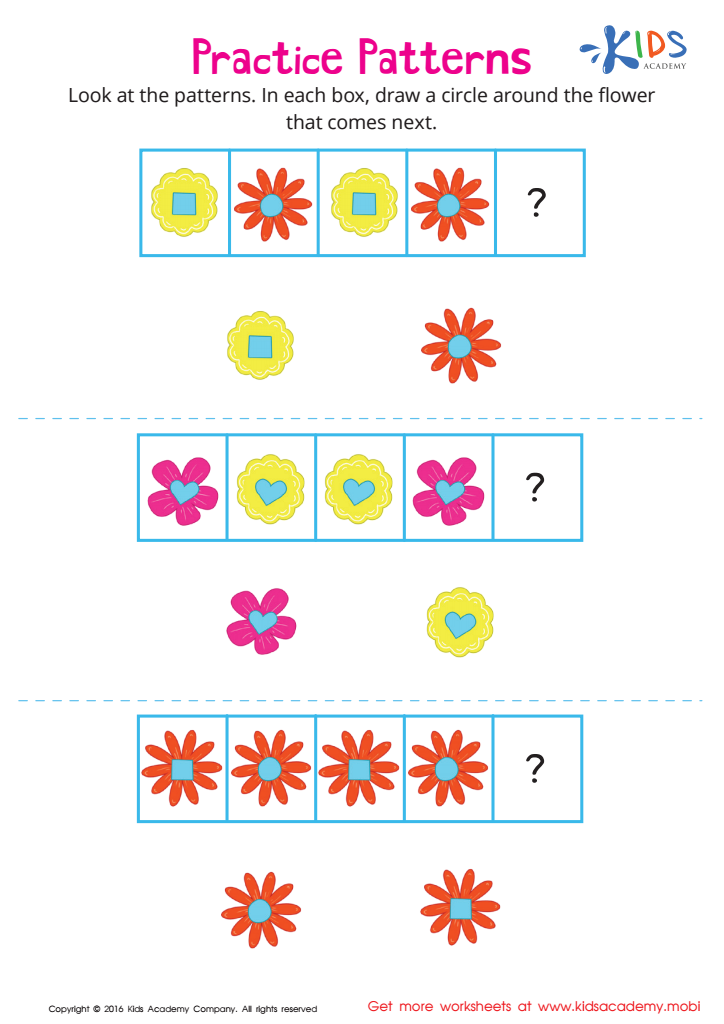Normal Patterns Worksheets for Ages 3-7
5 filtered results
-
From - To
Welcome to our engaging collection of Normal Patterns Worksheets designed specifically for children aged 3-7! These interactive resources help young learners explore and understand patterns through fun activities that boost critical thinking and creativity. With vibrant illustrations and diverse exercises, kids will enjoy identifying, creating, and extending patterns using shapes, colors, and objects. Our worksheets not only reinforce foundational math skills but also promote early logic and problem-solving abilities. Ideal for both classroom settings and at-home learning, our Normal Patterns Worksheets make mastering patterns exciting and enjoyable for your little ones! Start their learning journey today and watch their skills flourish!


Food Pattern Fun Worksheet


Find the Pattern Worksheet


Make the Same Pattern Worksheet


Shape Pattern Fun Worksheet
Understanding normal patterns of development for children ages 3-7 is crucial for parents and teachers as it lays the foundation for a child's growth and learning. At this stage, children undergo significant cognitive, emotional, social, and physical development. By knowing these developmental milestones, adults can better identify when a child is on track or needing additional support.
For parents, recognizing normal patterns helps in nurturing their child's individual potential. It allows them to celebrate achievements, understand challenges, and actively engage in their child’s learning journey. This knowledge also empowers parents to advocate for their children in educational settings, ensuring they receive appropriate resources and interventions if needed.
Teachers, on the other hand, benefit from understanding these patterns to create effective, age-appropriate learning environments. They can tailor their teaching strategies to meet the varying abilities and needs of their students, fostering an inclusive atmosphere. Additionally, by monitoring and evaluating a child's progress against these benchmarks, teachers can identify concerns early and collaborate with parents, ensuring that every child receives the guidance necessary to thrive.
Overall, understanding normal developmental patterns enhances communication, collaboration, and ultimately, the overall well-being and success of children.
 Assign to My Students
Assign to My Students
















